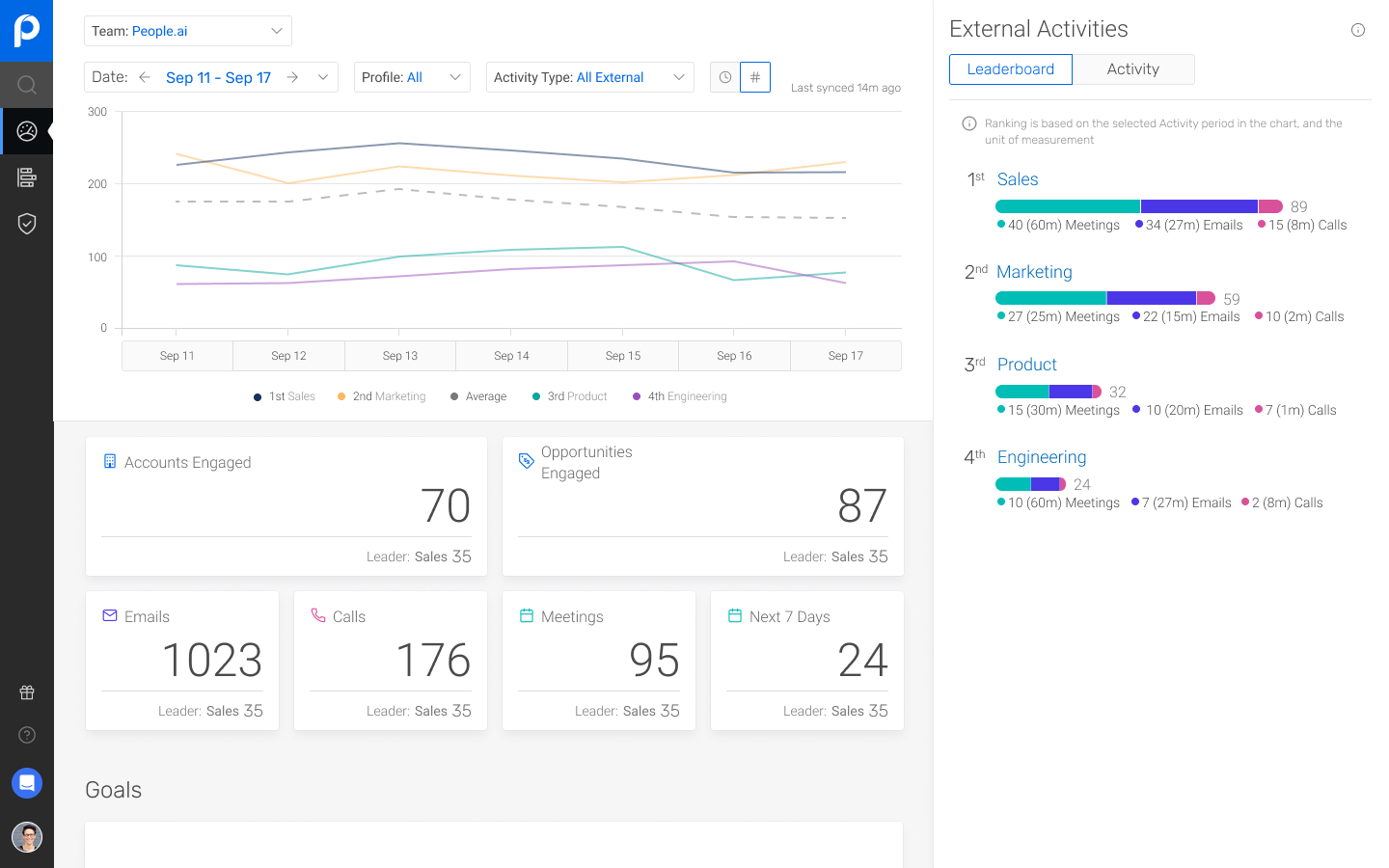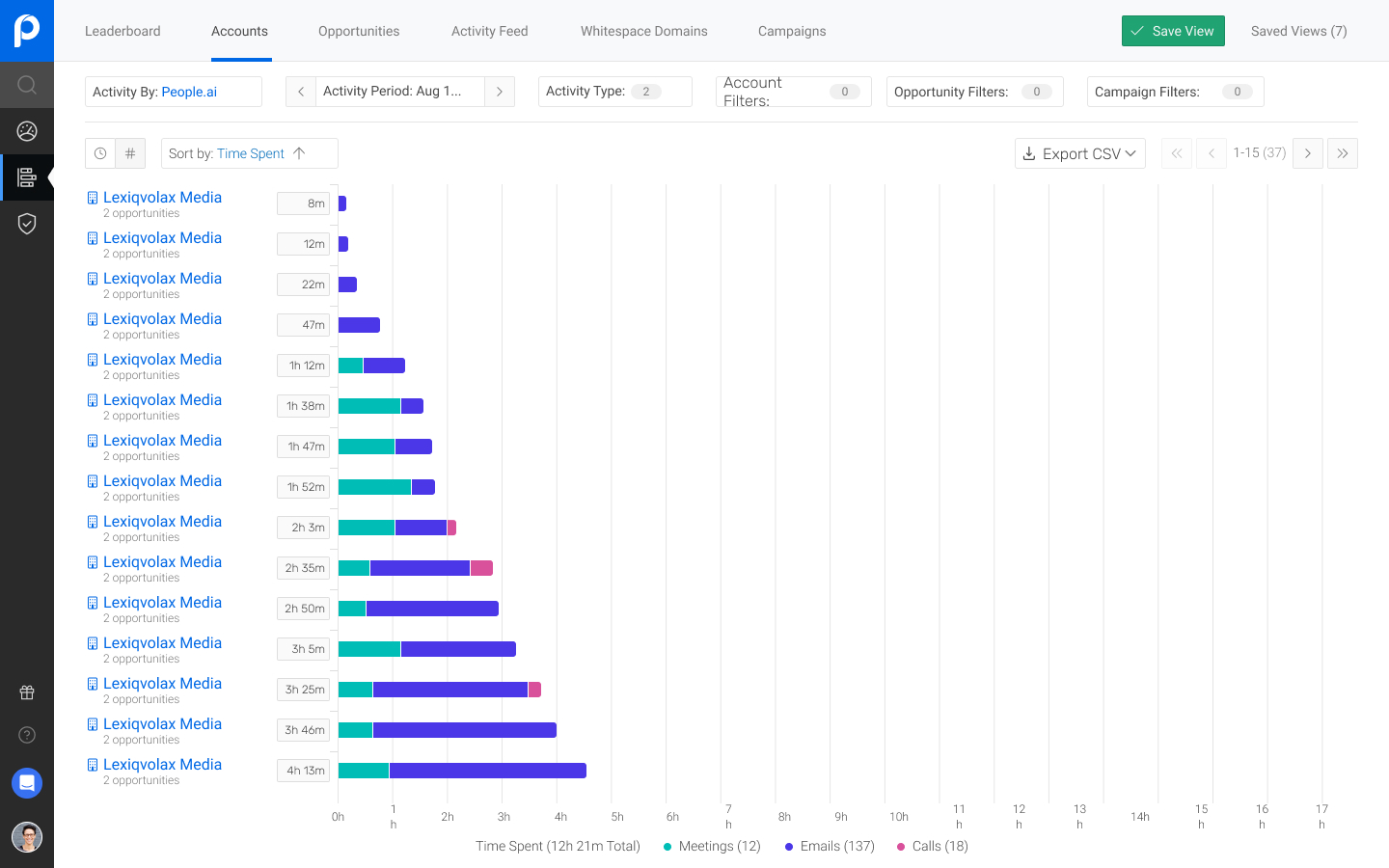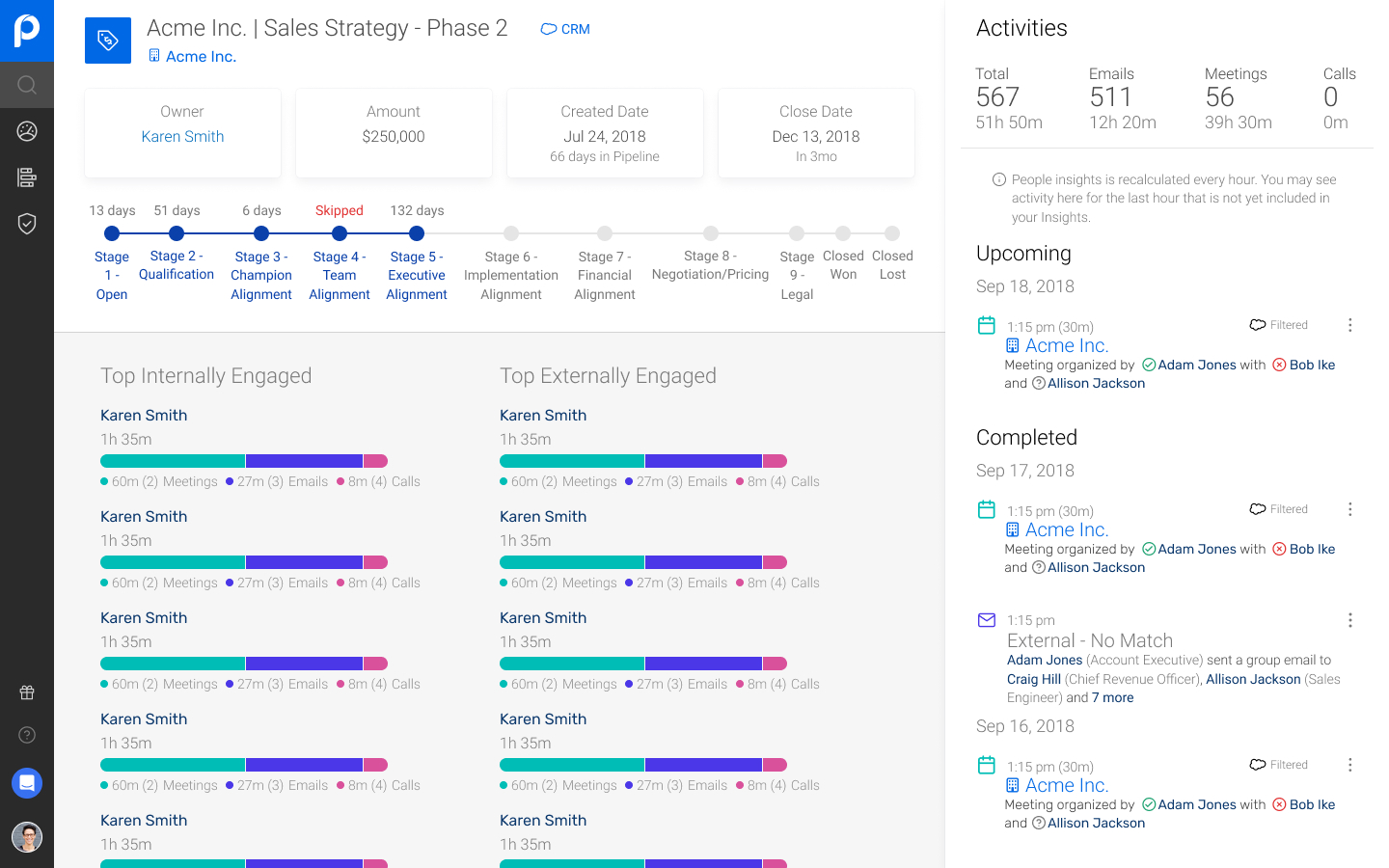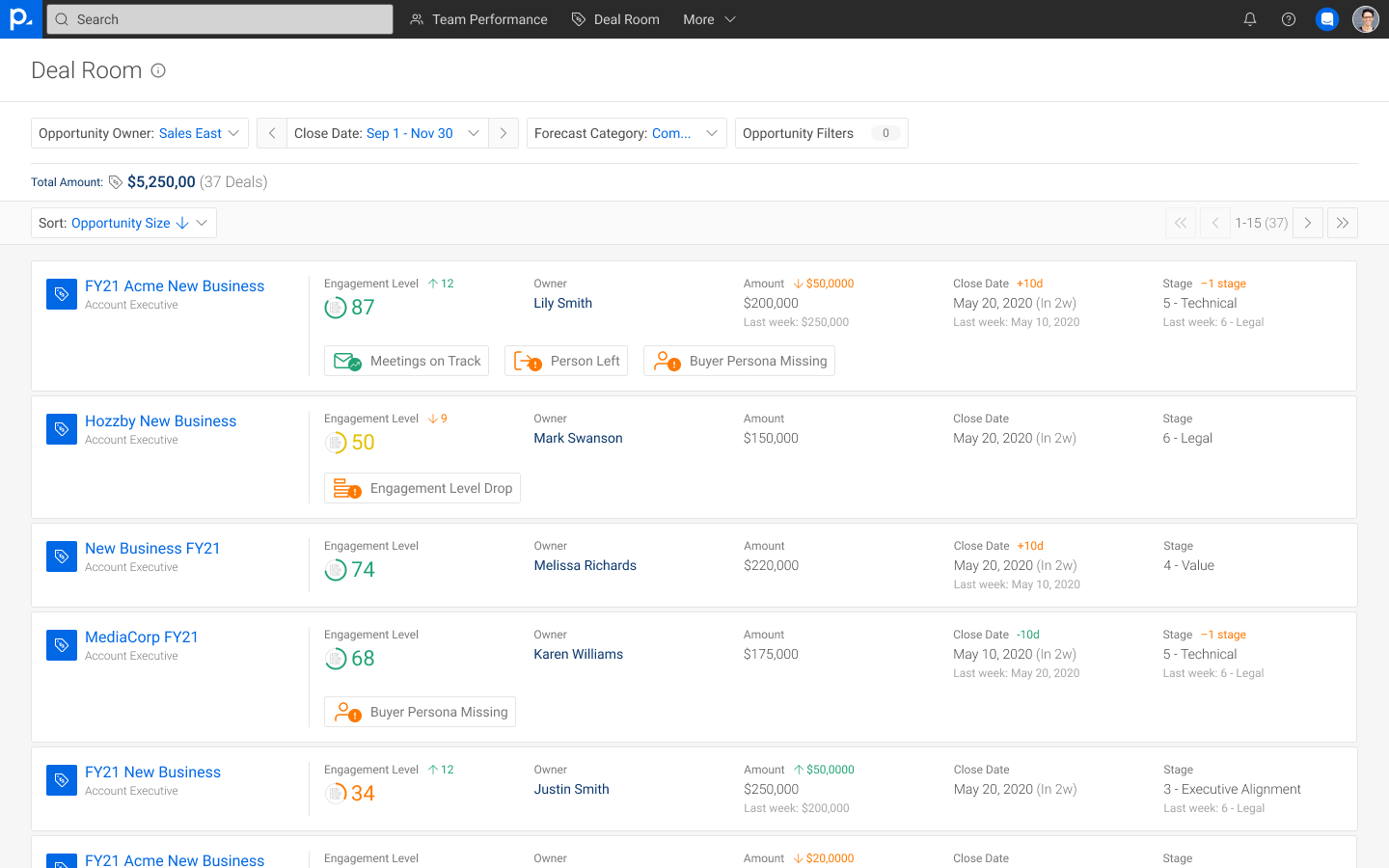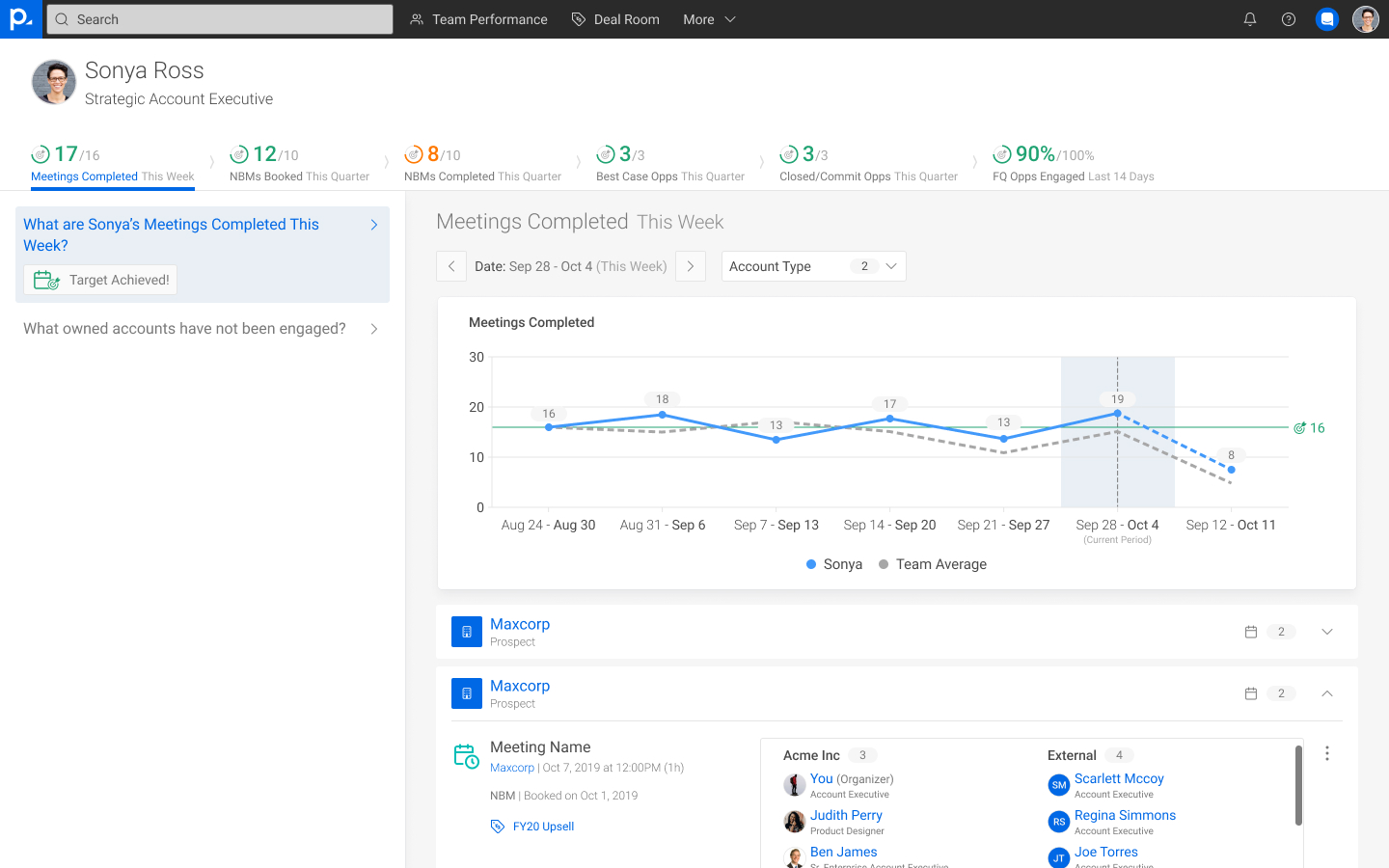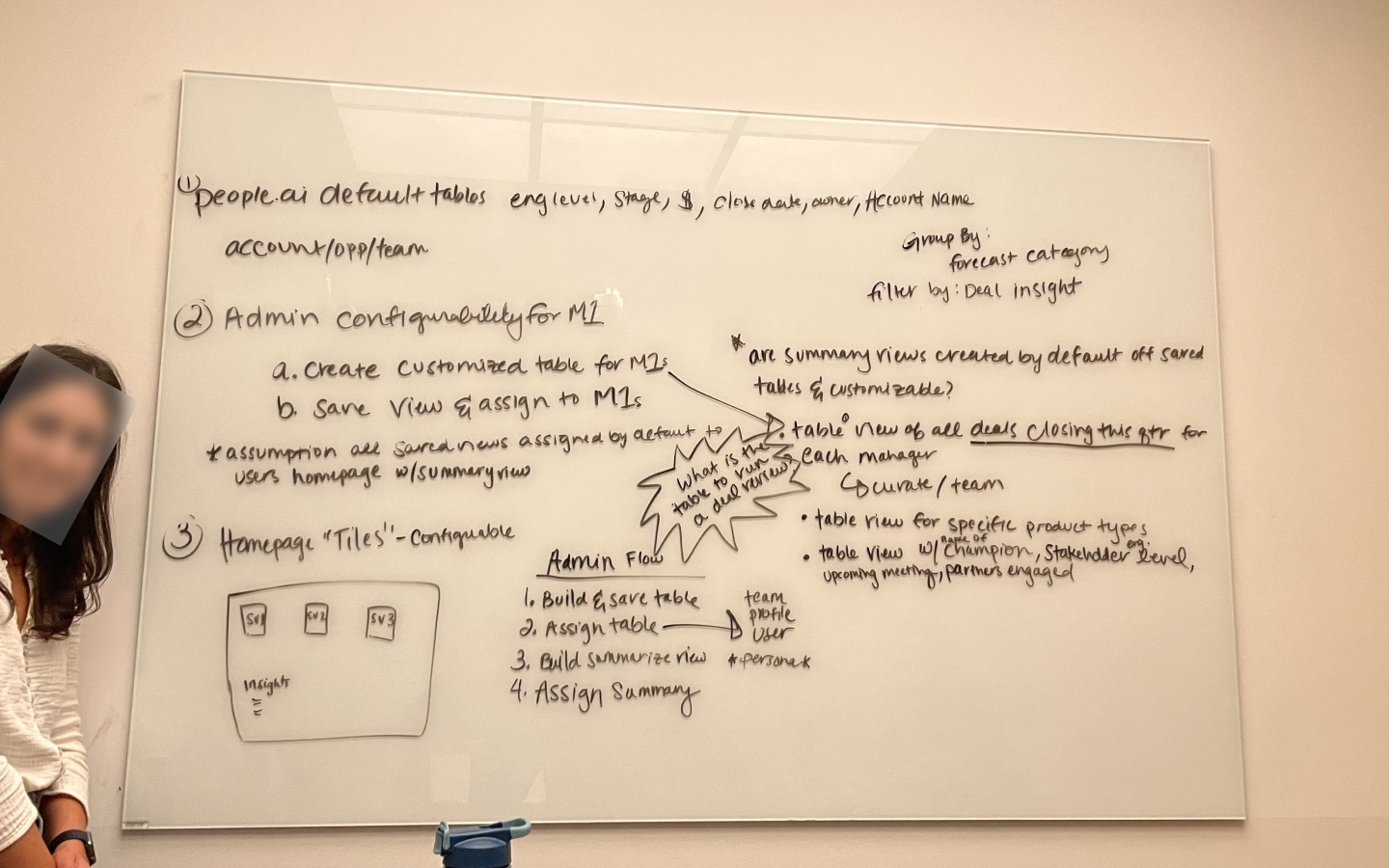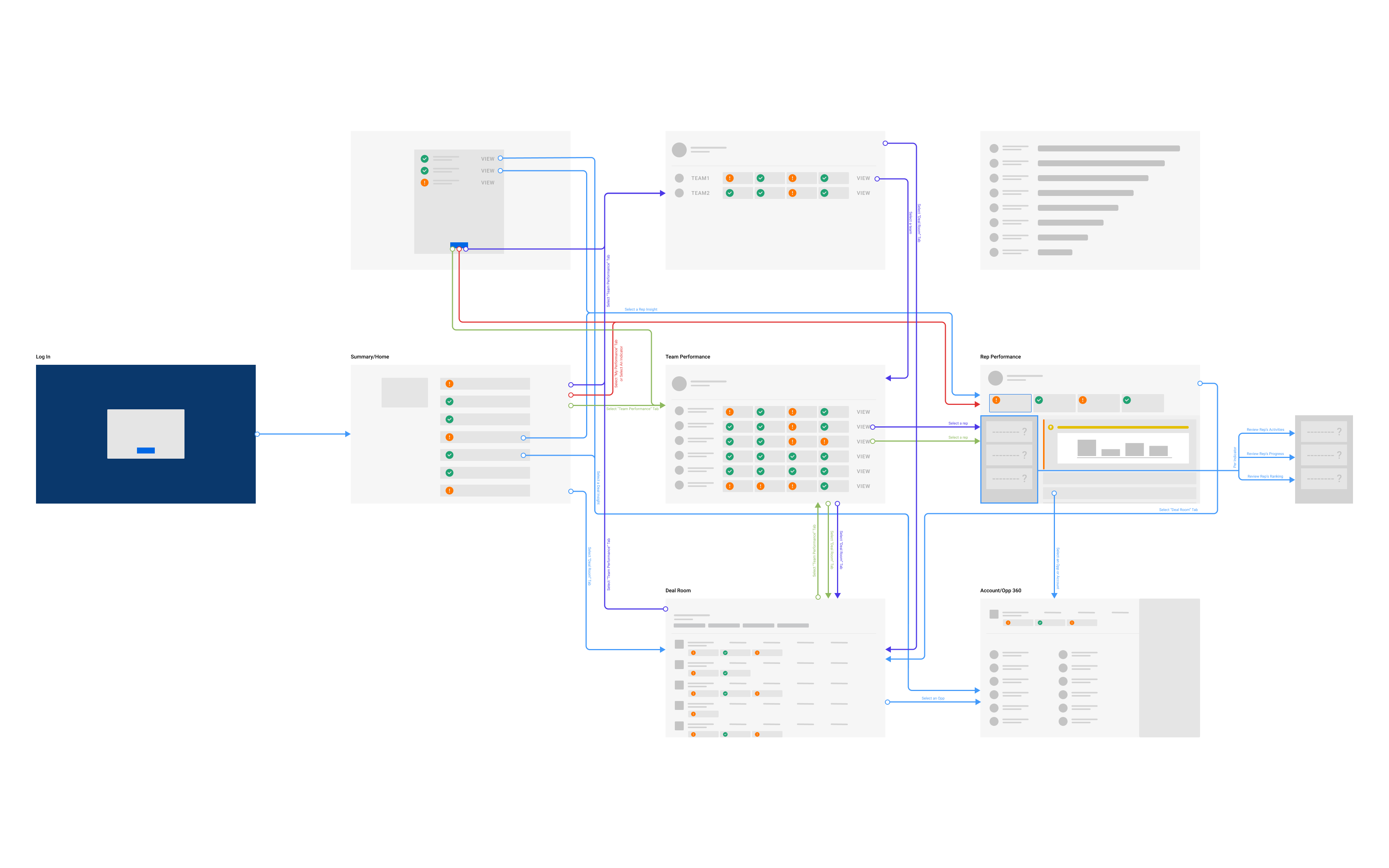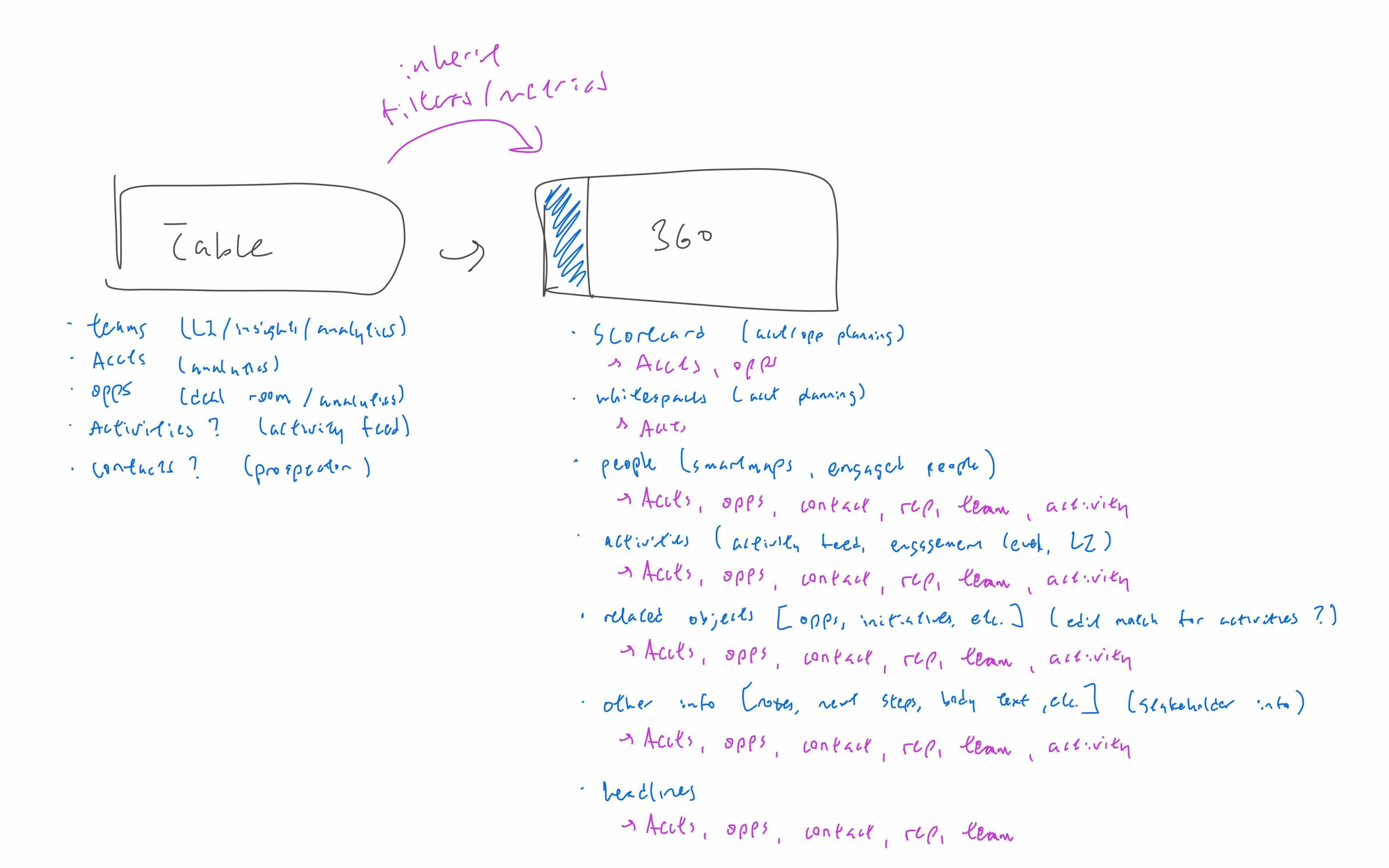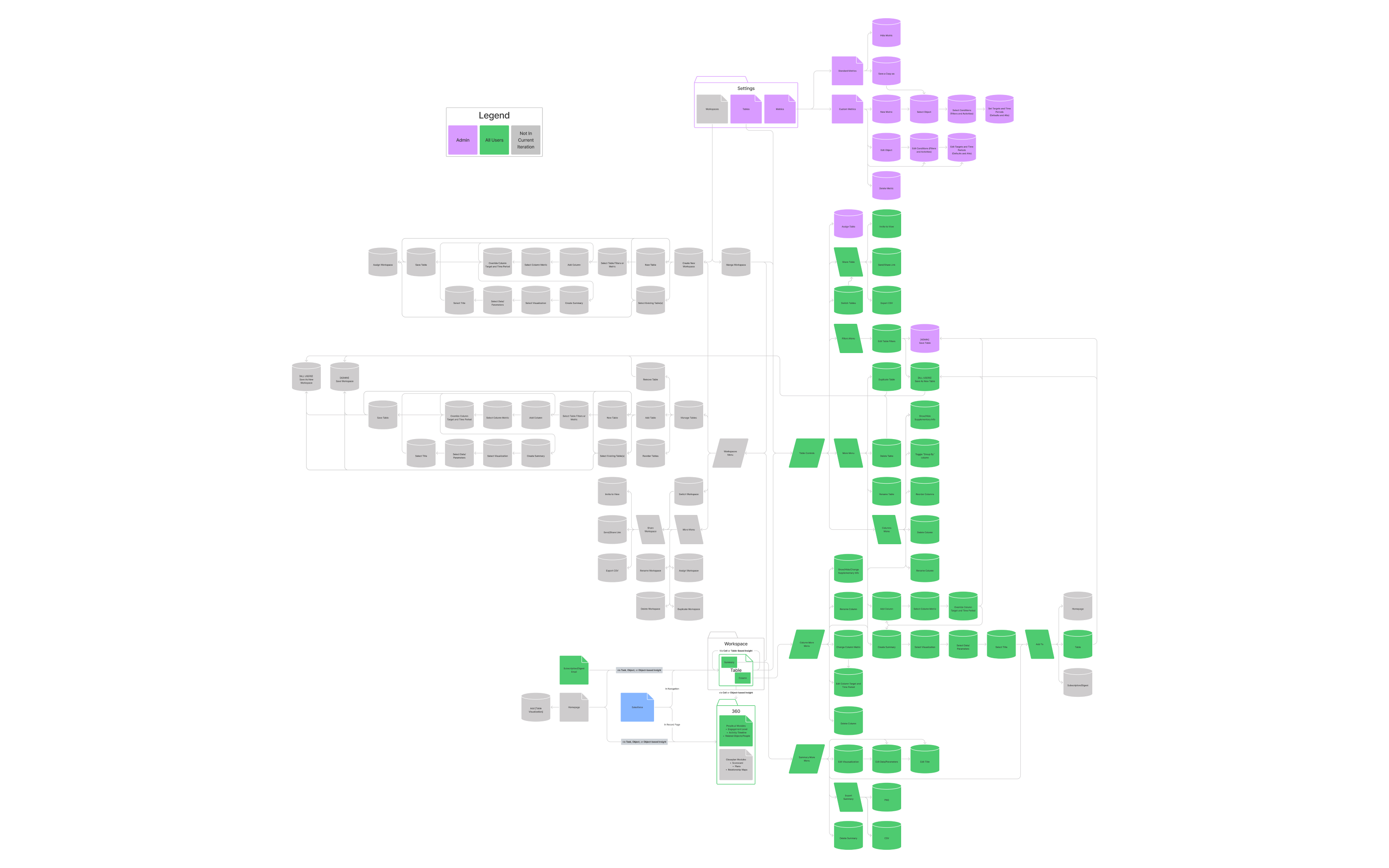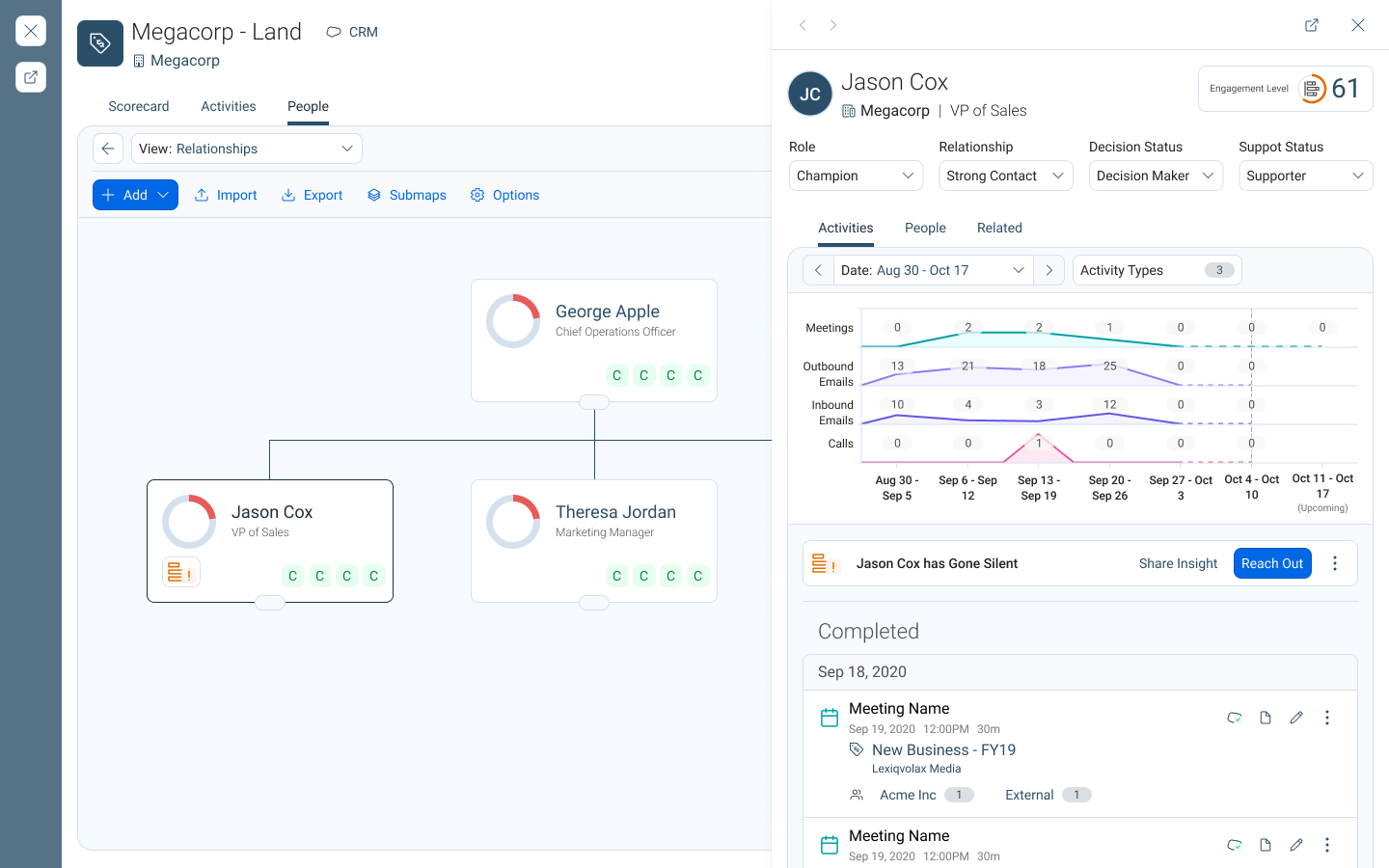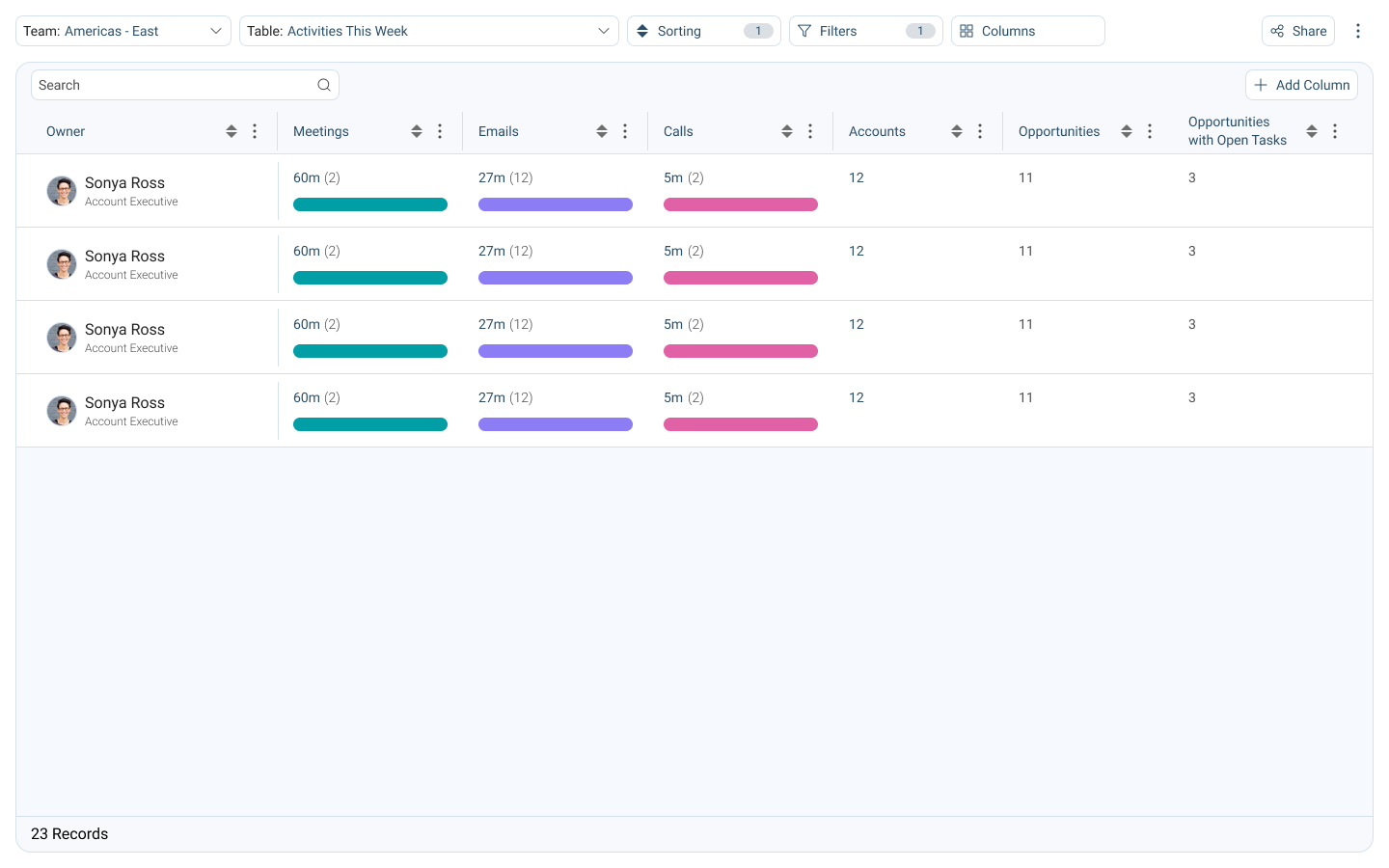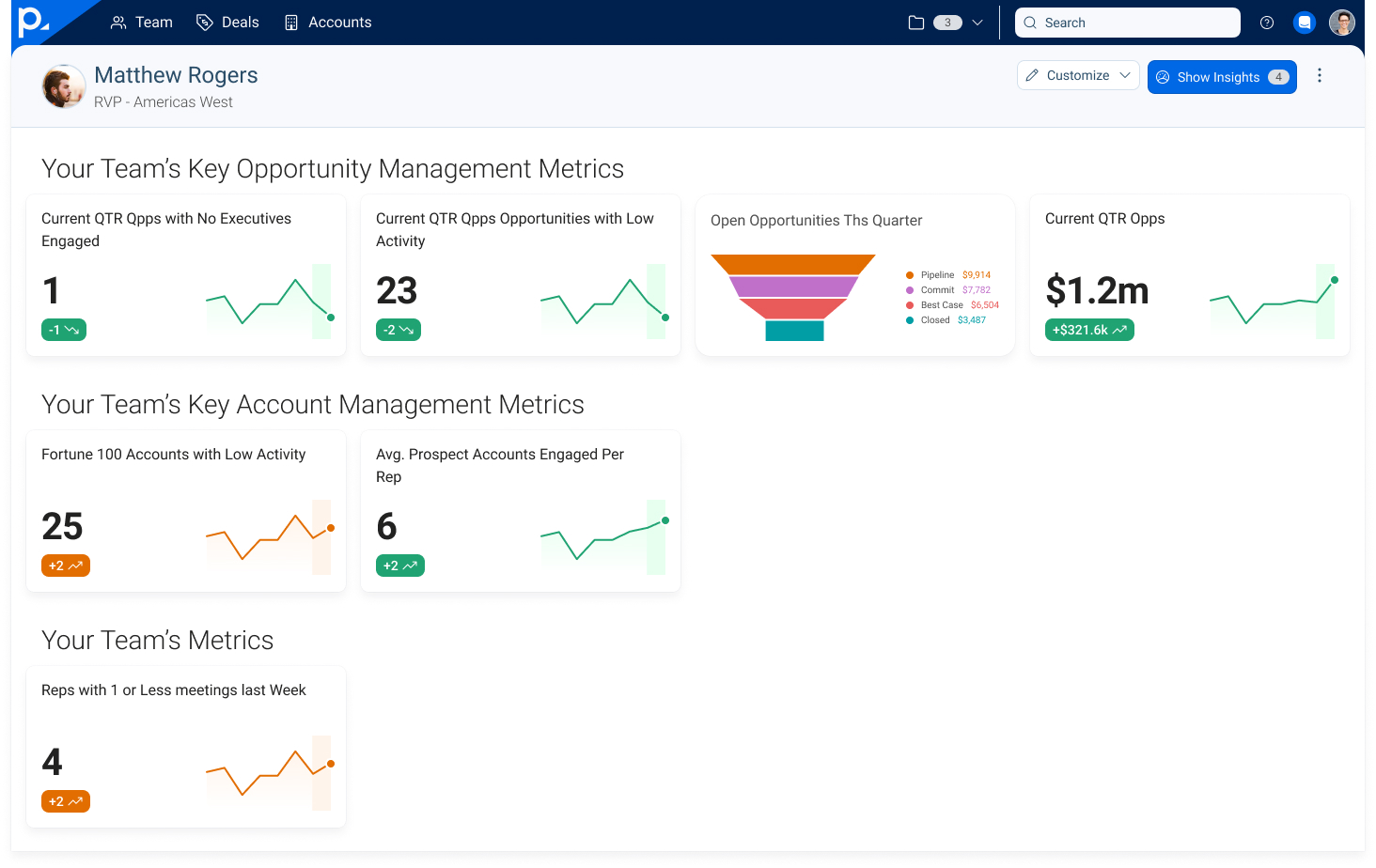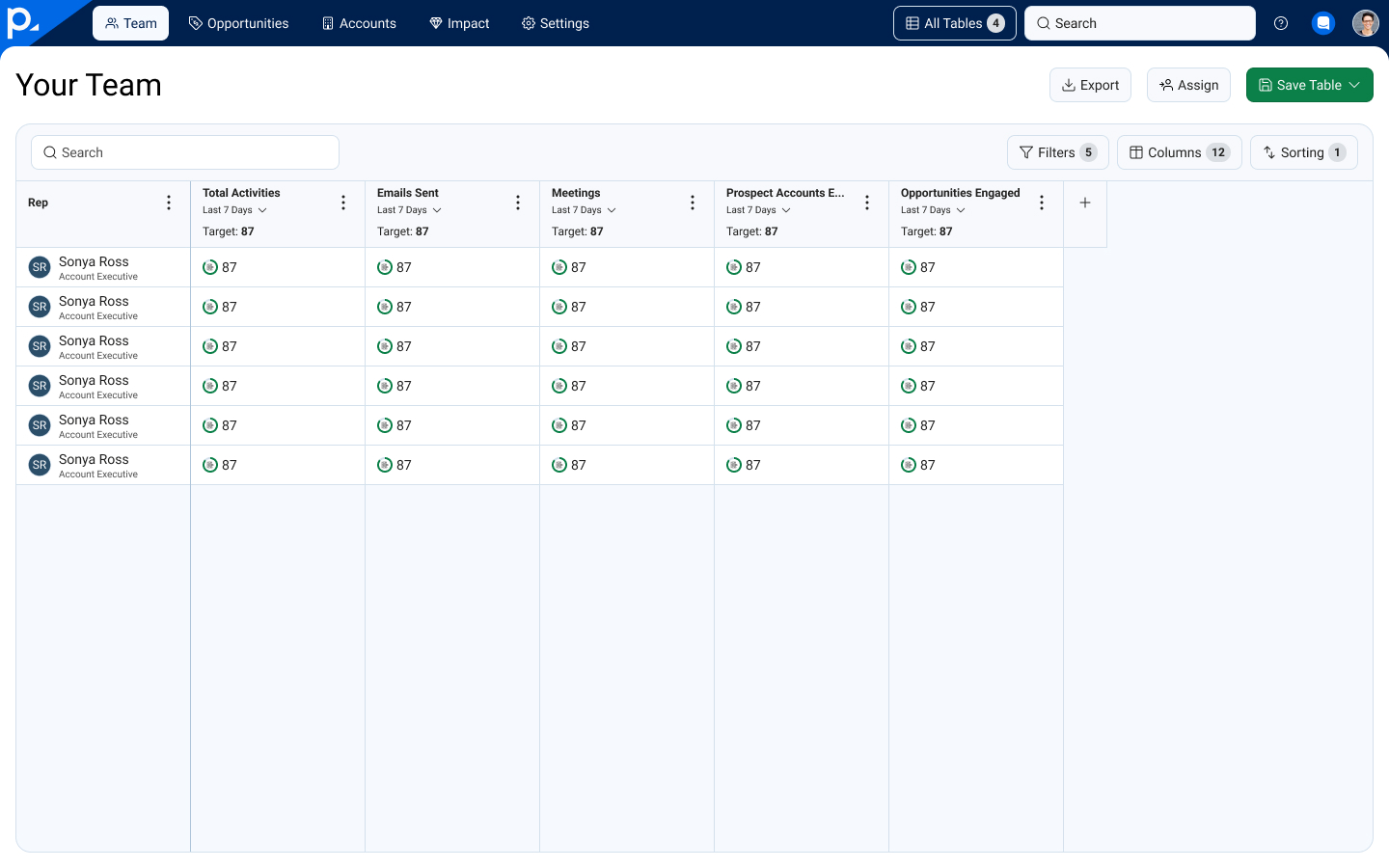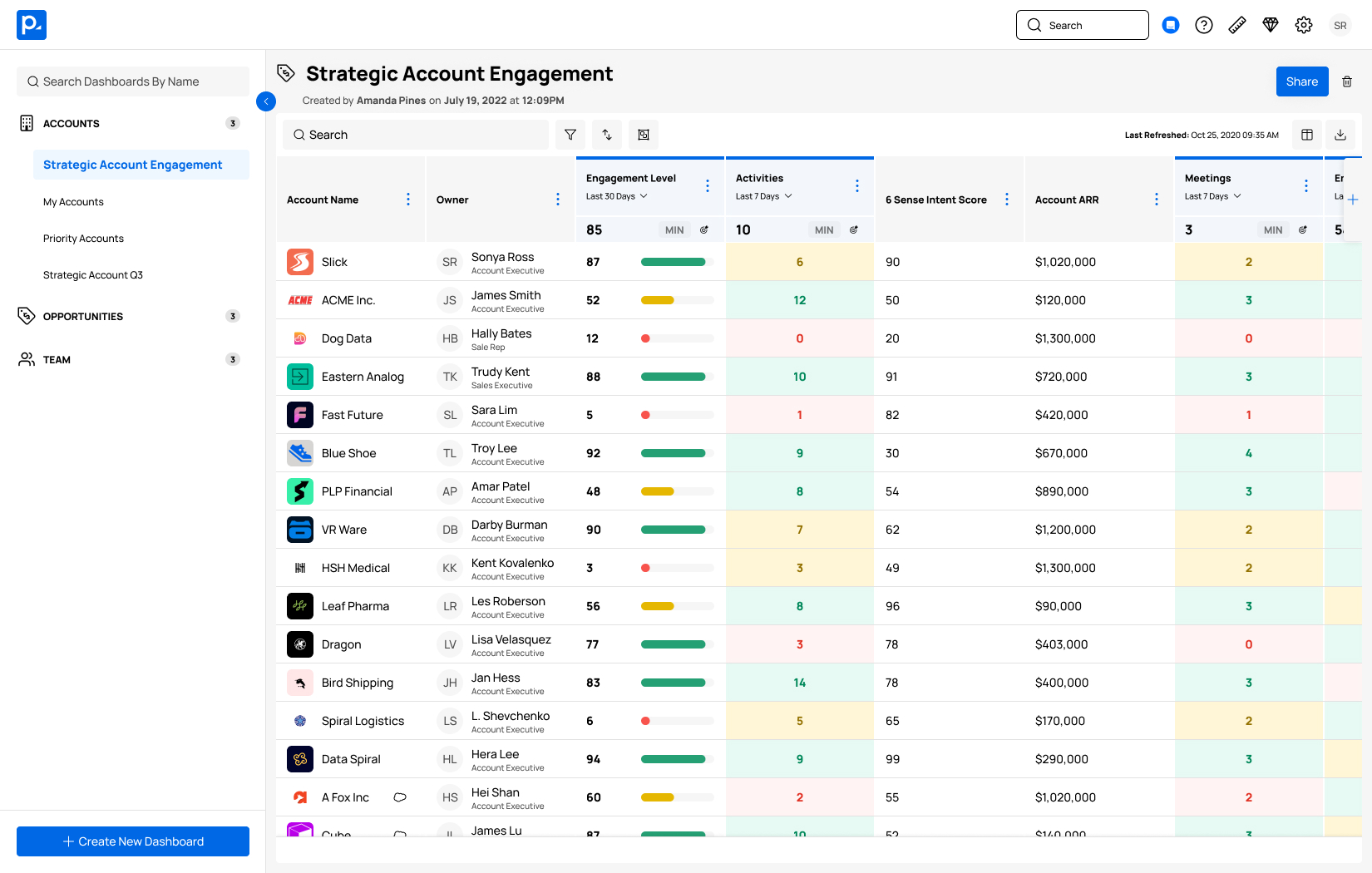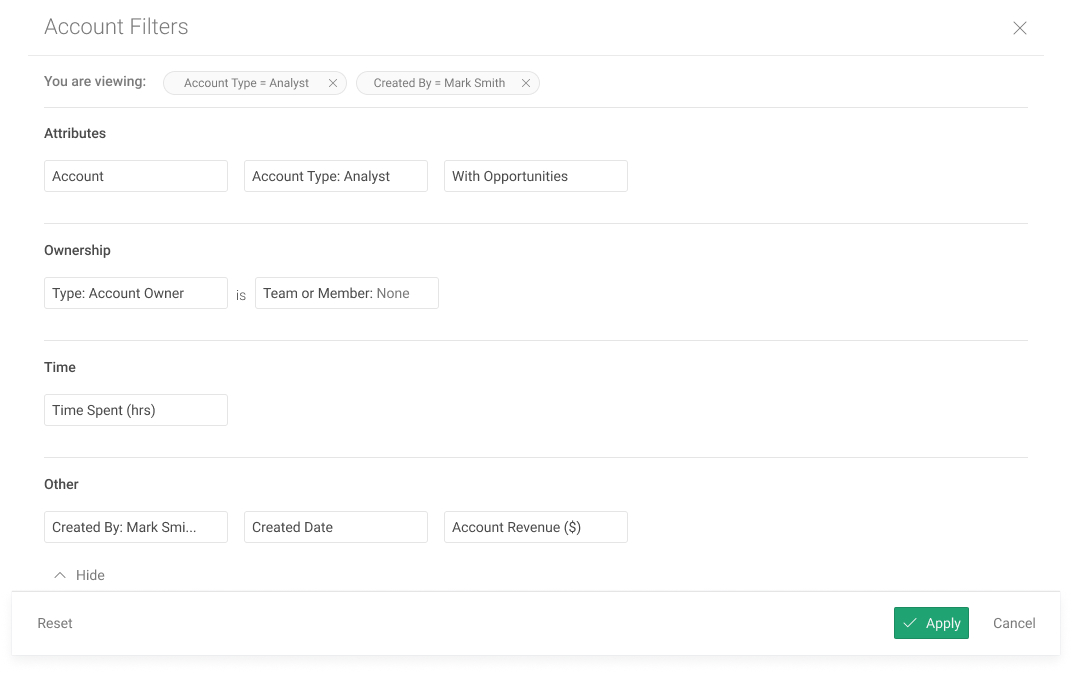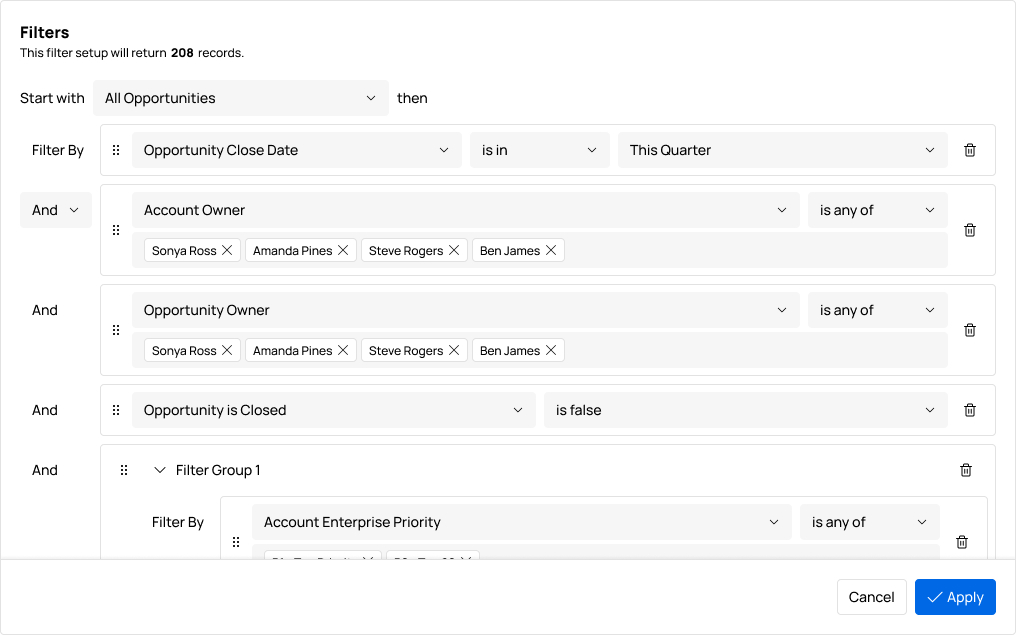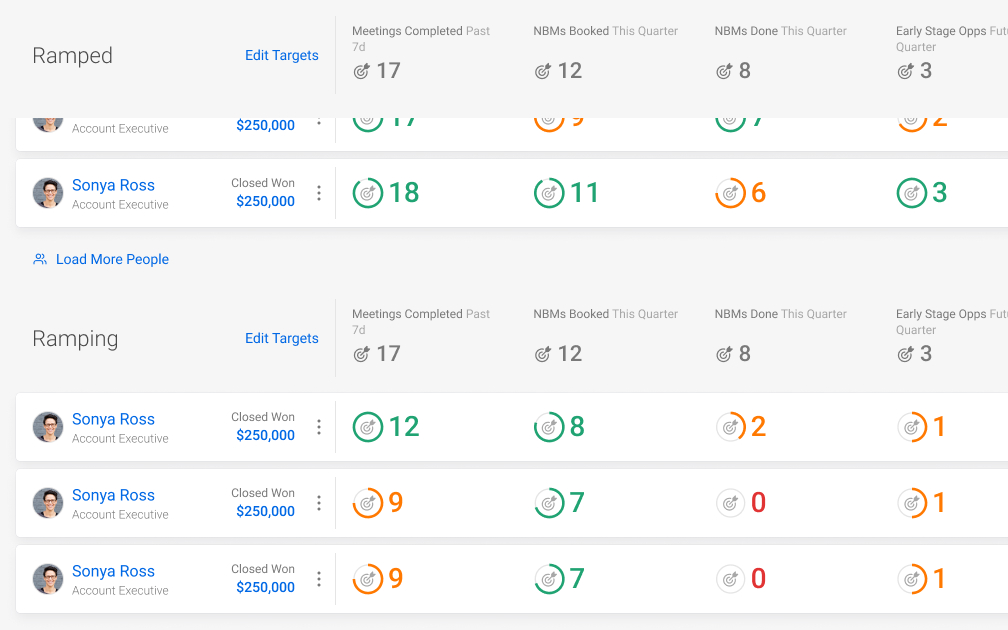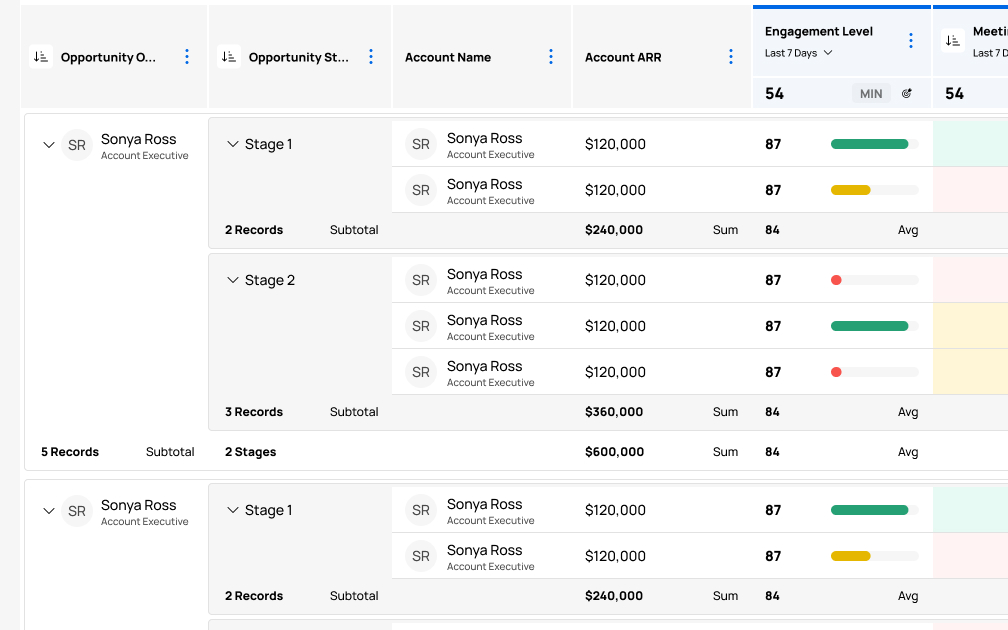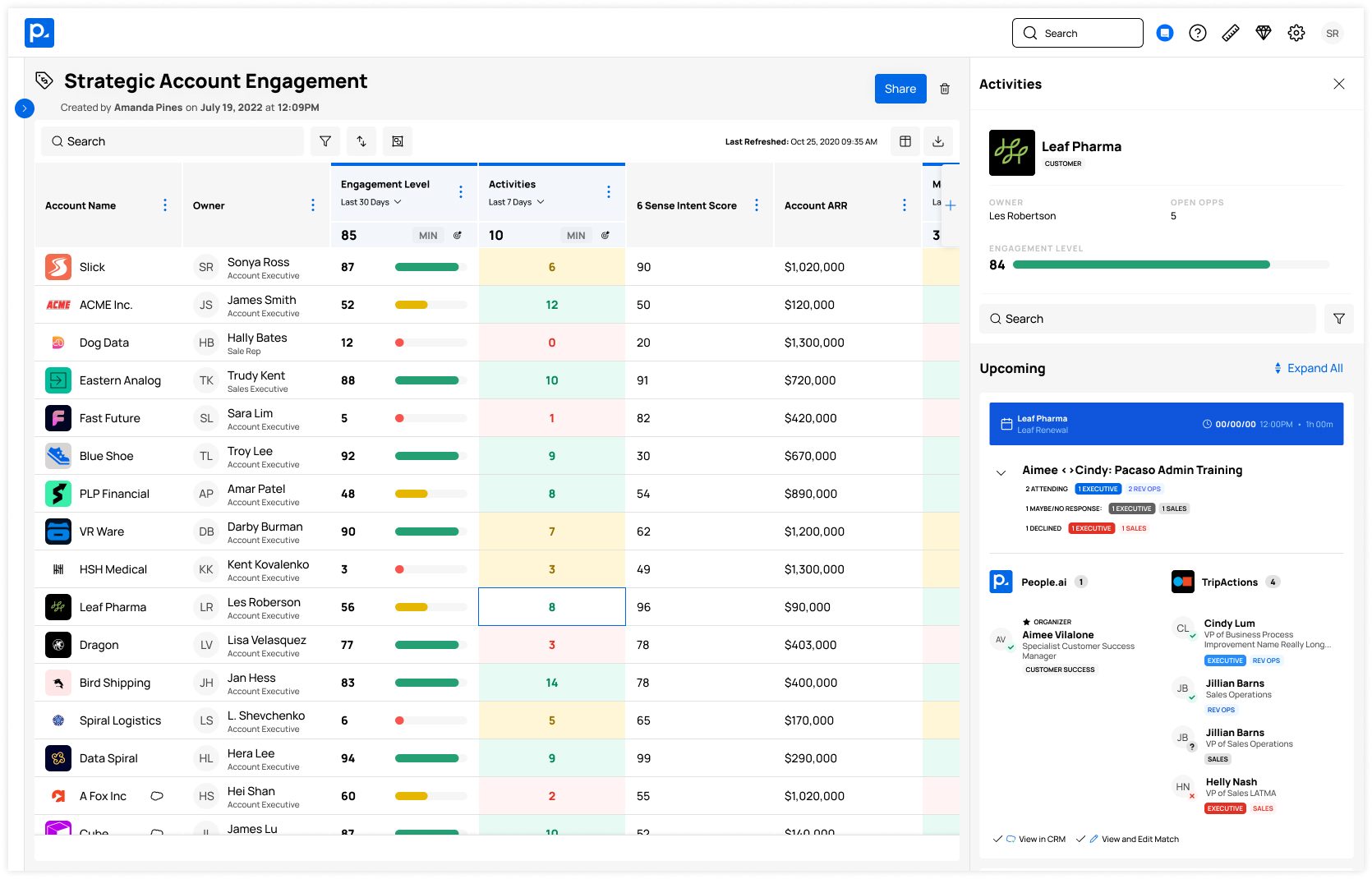Part of People.ai's value proposition has always been to use data to help sales organizations sell better.
However, our customers and users would consistently ask us "What does 'good' look like?" and "How do we point our teams in the right direction?".
Over time, we started to understand what our users were looking for as our machine learning system improved its capabilities and confidence rate.
There's a four-year history to this project, but feel free to skip ahead to the actual Engagement Dashboards project.
In 2018, People.ai experience initially comprised of three main views, generally predicated on the hypothesis that more activities means more engagement, leading to more success.
Over time as our data team become more confident in our ability to normalize aspects of our data set, we began to explore ways to present this data so that our users could capitalize on these insights.
Using data that we had collected over two years, we began to strategize about the future of our product:
- We now had richer data that a customer could leverage to empower and coach their teams more effectively.
- We also wanted our product to fit into a user's existing workflow to reduce the chances of tool fatigue impacting adoption.
We organized ourselves into three lanes to focus on deal health, performance metrics, and data customization.
In 2020, our team partnered with five customers to create a new suite of modules targeting front-line sales managers dubbed the People.ai Sales Solution.
The Deal Room showed key data for all of a team's sales opportunities based on when the deal was expected to close, facilitating a team's weekly deal review process.
The Team Performance page allowed a manager to see how their team was performing based on leading indicators configured by their revenue operations team.
The sales solution overall had a higher retention rate, as well as a higher number of weekly active users than the previous People.ai suite of modules.
We had designed and engineered the Sales Solution bespoke to the needs and requirements of those five customers that we worked with.
It became clear that as effective as the sales solution was, it quickly ran into issues with scalability and flexibility.
- The customers that we worked closely with were all familiar with the MEDDIC sales methodology, and our solution was difficult for customers unfamiliar with the methodology to adopt.
- Because we had focused so much on front-line sales managers, we ran into issues scaling up to accommodate higher levels of sales management and leadership.
- Customers wanted additional flexibility around the Deal Room view, since different organizations focused on different numbers and attributes.
In the summer of 2021, two Product Managers, our VP of Product, and I spent many days in a WeWork brainstorming what the next evolution of the Sales Solution should be.
We started by breaking down feedback that we had received from customers on the Sales Solution, both from interview sessions and via our Customer Success team, and began to reshape the user stories that drove the Sales Solution's design.
I started to map our what these changes could mean for our product in terms of user flows through all of our various modules, especially after we had determined that we should focus on how sales leaders coach sales managers in addition to how sales managers coach their reps.
We began to realize that thinking within the existing experience wouldn't actually help us create a scalable product, so we began to think about our product in much more simpler terms: data tables were just data tables, and detail pages were just detail pages.
And from this, we created the Engagement Dashboards. A completely flexible reporting solution where we could still work with our customers to guide them toward "what good looks like" while also giving our customers the flexibility to define their experience for themselves.
The Engagement Dashboards were designed to be extensible beyond the Team Performance and Deal Room views. A customer could specify custom columns of data that they wanted to track for opportunities or team members, and we expanded the functionality to include accounts for customer success use cases.
Our previous click-through experience lacked scalability from an information architecture perspective, and customers found it overwhelming. We began to pare down what a "detailed" view meant to better support our user's actual workflows.
